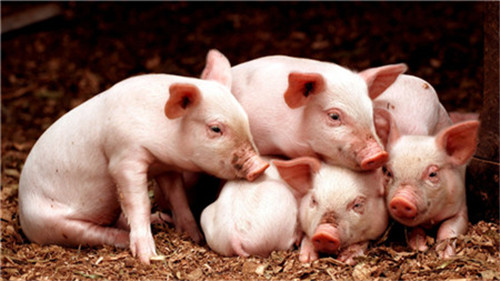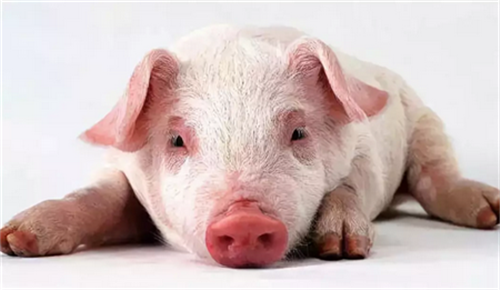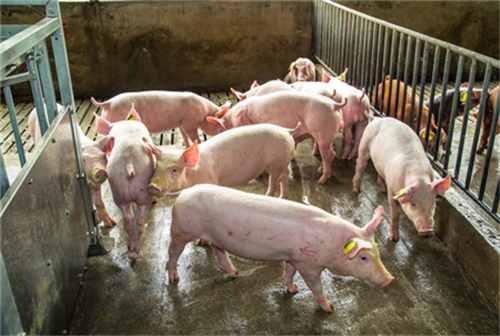Analysis of reproductive problems in different stages of sows
For sows, reproductive problems are the biggest headache, so are they all about beard and eyebrows? Of course not, we have to scientifically analyze how the fetus is fully developed in the sow!
First sow insemination is successful, fertilized eggs move from the oviduct to each uterine horn, where they move freely until day 12, from day 12 to day 18, zygotes separate automatically, embryos enter the uterus soon after the formation of amniotic sac, and attached to the uterine wall. After 21 days, all embryos were implanted. After 35 days of pregnancy, the whole body organs of the piglets are formed. From then on, the embryos continue to develop and the bones ossify. After about 70 days of pregnancy, the fetus can have an initial immune system and can resist the infestation of some pathogenic bacteria. Fetal weight gain is slow in the first 80 days of pregnancy, and the weight gain is less than one third of the whole birth fetus, while the late pregnancy, that is, the 30 days before labor, is the period of rapid fetal growth, during which the fetal weight gain accounts for more than two thirds of the birth fetus weight until the sow is delivered at about 114 days.
When we know the dynamic progress of sow pregnancy, and according to the sow breeding time will be completed within 3 days, so that we can think about the sow disease at different stages of deeper reasons to provide a reliable basis.
We divided the reproductive process of sows into five stages: return to estrus within 18 days, return to estrus about 21 days, abortion about 35 days, abortion 45-70 days, abortion after 70 days.
1. Analysis of reasons for returning emotion within 18 days:
Case 1: It indicates that the worker's estrus identification is not accurate; there are two reasons, the worker's identification of estrus technology is not up to standard or the sow appears false estrus, mycotoxin poisoning.
Case 2: It shows that the oestrus identification of workers is accurate, but the insemination time is too late.

2. Analysis of reasons for returning emotion after about 21 days:
It belongs to normal return to estrus, indicating that the estrus identification is correct, but there is a failure of conception, including three major reasons:
1. Breeding: Insemination time is too early, or too much backflow, or unqualified semen, resulting in insemination failure.
2. Management: The management stress factors (such as excessive driving, injection, mixed group fighting, continuous high temperature in the house, etc.) after insemination caused the loss of fertilized eggs and failed to reach the number of embryos required for pregnancy establishment (generally considered at least 5).
3. Pathogen: The estrous identification is accurate, but due to the occurrence of diseases leading to high fever (especially swine fever, foot and mouth disease, influenza, toxoplasmosis, etc.), the first pregnancy signal of sows (about 9-12 days after insemination, when the fertilized eggs reach the uterus) is not established.
3. Analysis of causes of abortion around 35 days:
This type of abortion is mostly pathogenic bacteria infectious abortion, non-management factors. Problems occurring 3-4 weeks after mating caused embryo loss.
There are two main reasons for this.
1. Embryo reabsorption or pregnancy failure caused by disease, so symptoms may not be seen (pseudorabies virus, parvovirus), as well as Leptospira and mycotoxin, toxoplasma infection.
Second,"lactation period is too short" or "uterine inflammation damage", uterus failed to fully recover, etc.
45-70 days after abortion:
These abortions give birth to mummified embryos. The most common pathogens include Japanese encephalitis virus, parvovirus, pseudorabies virus and toxoplasmosis, especially in early summer. JE and fever in first-born gilts are extremely susceptible to miscarriage, especially when co-infected with other pathogens (mycoplasma, salmonella).
Analysis of abortion after 70 days:
Eperythrozoonosis, pseudorabies and toxoplasmosis (any stage can occur), domestic pig farms should also pay attention to whether there are breeding sows (including boars) in the sporadic period of blue ear disease, characterized by large premature fetuses and the coexistence of stillbirth mummies.
If mummified foetuses occur when sows give birth to piglets, the developmental age can be inferred from the length of the foetuses, and then the pathogen can be analyzed according to the age of pathogen onset. In general, the relationship between fetal length and age at death was as follows: 2 cm/25 days, 2.7 cm/30 days, 4.6 cm/40 days, 8.9 cm/50 days, 13.5 cm/60 days, 17 cm/70 days, 20.7 cm/85 days, and 27 cm/110 days. If there are weak offspring, according to about 70 days of pregnancy, the fetus will have an early immune system that can resist some pathogens. It indicated that the sow might be infected with some pathogens or strong stress (injection of oil seedlings, etc.) after 70 days of gestation, thus causing the appearance of weak fetuses.
- Prev

Is it unhealthy for sows to sleep and kill piglets 5 days after delivery?
Is it unhealthy for sows to sleep and kill piglets 5 days after delivery?
- Next

Attenuation Law and reference immune Age of Maternal Antibody in Piglet
Attenuation Law and reference immune Age of Maternal Antibody in Piglet
Related
- On the eggshell is a badge full of pride. British Poultry Egg Market and Consumer observation
- British study: 72% of Britons are willing to buy native eggs raised by insects
- Guidelines for friendly egg production revised the increase of space in chicken sheds can not be forced to change feathers and lay eggs.
- Risk of delay in customs clearance Australia suspends lobster exports to China
- Pig semen-the Vector of virus Transmission (4)
- Pig semen-the Vector of virus Transmission (3)
- Five common causes of difficult control of classical swine fever in clinic and their countermeasures
- Foot-and-mouth disease is the most effective way to prevent it!
- PED is the number one killer of piglets and has to be guarded against in autumn and winter.
- What is "yellow fat pig"? Have you ever heard the pig collector talk about "yellow fat pig"?

